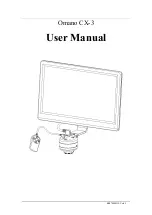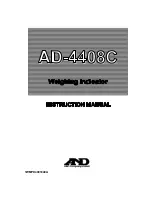
11
M5101-EN Rev. B |
Never leave the calibrator unattended when it is in operation or in the cooling phase.
Do not remove or obliterate type plates or other markings on the device, as otherwise the warranty is rendered null
and void.
Special Safety Instructions:
Thermal fuse! The calibrator is equipped with a temperature fuse that works independently. If there is an over-temperature
in the inside of the housing, the power supply to the heating system is cut off. The calibrator cannot then be started any
more.
After it has cooled, send the calibrator for inspection to Kaye.
Risk of injury from hazardous gases! When liquids are heated, the evaporation can result in dangerous gases being
formed.
The calibrator may not be used in an explosion-endangered atmosphere (ignitable or explosive atmosphere).
Remove all the easily flammable media from the vicinity of the calibrator.
Ensure that the calibrator cannot encounter easily flammable or explosive media.
Operate the calibrator only in the temperature range permissible for the test sample.
Ensure that the test sample is securely fixed in the calibrator.
Use only suitable adapter sleeves or calibration inserts. When doing so, also ensure that the
structural safety of the calibrator is retained.
IMPORTANT NOTICE!
Always unscrew the transport cover before putting the micro bath into service to avoid excessive
pressure.
Wait until the micro calibration bath has cooled down before screwing on the transport cover.
Further warnings that are specifically relevant to individual operating procedures or activities can be found at the
beginning of the relevant sections of this operating manual.
Micro Bath Calibration Safety Instructions:
Before using calibration liquids, read the entire safety data sheet attentively. Pay attention to the information on the
physical and chemical properties.
Only use calibration liquids that are suitable for the required temperature range and which are not flammable.
Always wear safety goggles for the eyes when handling calibration liquids.
Do not exceed the maximum fill level of the tub insert, which is below the fixture for the sleeve exchange tool.
Silicone oil:
Prevent silicone oil from meeting your eyes by always wearing safety googles.
Use only the silicone oil recommended here.
Always read the safety data sheet supplied with the silicone oil before using it.
Always ensure adequate ventilation when working with silicone oil, since hazardous substances can be released.
Spilled or leaked silicon oil results in extreme danger of slipping. Clean the affected area immediately by suitable
methods.
Since silicone oil is hygroscopic, always use the transport cover to close the calibration bath after use.
Chapter 2. Safety Information
Содержание LTR-150
Страница 43: ...43 M5101 EN Rev B Notes...












































